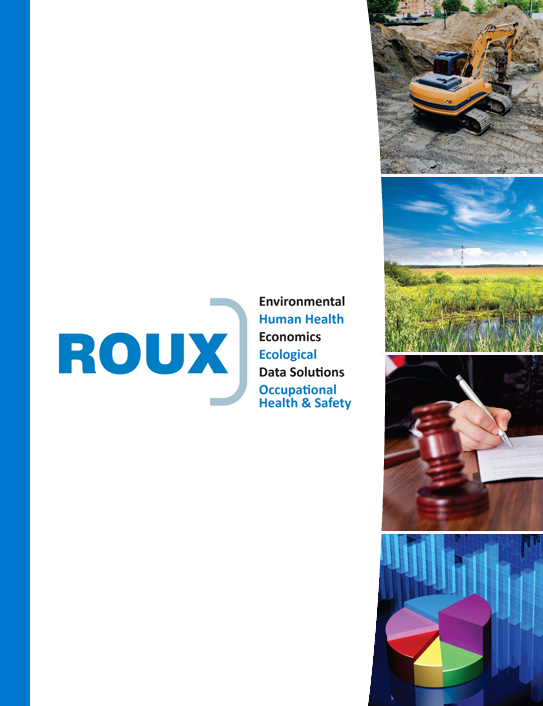How low can they go? USEPA Revisions to Health Advisories and Regional Screening Levels
There has been a flurry of recent USEPA activity advancing towards federal regulation of per and polyfluoroalkyl substances (PFAS):
- Yesterday, on June 15, 2022, the USEPA issued “interim updated” Lifetime Health Advisories (HAs) for perfluorooctanesulfonic acid (PFOS) and perfluorooctanoic acid (PFOA), and final HAs for hexafluoropropylene oxide dimer acid and its ammonium salt (HFPO-DA, sometimes referred to as GenX chemicals) and perfluorobutane sulfonic acid and its related compound potassium perfluorobutane sulfonate (together, referred to as PFBS).
- On May 18, 2022, the USEPA added five PFAS to their Regional Screening Levels (RSLs) in their biannual update.
USEPA HAs and RSLs are technically not cleanup levels, but they both often are used extensively by states to inform decision making, derive state-specific regulations, or are deferred to as de facto state regulatory levels. Highlights, take-aways, and the potential consequences of each update are provided below.
USEPA HA Update
Although not surprising given the USEPA’s proposed toxicological approach to derivation of Maximum Contaminant Levels (MCLs) for PFOA and PFOS (currently under review by the Science Advisory Board, SAB), the new toxicity parameters for PFOA and PFOS grounding the HA are much more conservative than toxicity assumptions used to derive the 2016 HA for PFOA and PFOS (previously 70 ppt). The new Reference Doses (RfDs) that are utilized to derive the HA are two to four orders of magnitude lower than the previous RfDs relied upon. The most sensitive non-cancer endpoint tethering the revised HA for PFOA/PFOS is decreased serum antibody concentration in children observed in human epidemiological studies. For GenX and PFBS, toxicity criteria were selected from animal studies (based on liver and thyroid effects, respectively). The new and revised HAs are as follows:

These values were derived using the same data the USEPA is using to develop Maximum Contaminant Level Goals (MCLGs), which factor into the USEPA’s derivation of enforceable MCLs. MCLGs represent levels protective of human health with no consideration of technical achievability or a cost-benefit analysis. Derivation of these HAs at the part-per-quadrillion level reveals that USEPA’s ultimate MCLs cannot be grounded solely by their analysis of potential human health impacts, as achieving levels this low for such ubiquitous contamination is impractical for a multitude of reasons.
USEPA RSL Update
RSLs are risk-based screening tools used by the USEPA to evaluate soil, air, and tap water for residential and industrial receptors. Although these values are not cleanup standards, they are used extensively at both the state and federal level to inform cleanup of contaminated sites.
The five PFAS compounds added to the RSLs include GenX, PFOS, PFOA, PFNA, and perfluorohexanesulfonic acid (PFHxS). A sixth PFAS compound, PFBS, has been included in the USEPA RSLs since 2014 (with toxicity information updated in 2021). The screening levels for PFOA, PFOS, PFNA, and PFHxS were updated based on the Agency for Toxic Substances and Disease Registry (ATSDR) Minimal Risk Levels (MRLs) included in the 2021 PFAS Toxicological Profile, while GenX updates were based on USEPA’s 2021 Human Health Toxicity Values.
A summary of new PFAS screening values is provided below (HQ = 1, Target Risk = 1E-06).

Notably, these values vary from the USEPA HAs for PFOA, PFOS, and GenX described above.
Overall, both these updates reflect the USEPA’s digestion of an incredible wealth of new scientific investigation of PFAS potential health effects in humans and animals since the release of the 2016 HA.
The real shoe will drop in the fall of 2023, when the USEPA is targeting a proposed PFAS National Drinking Water Regulation. Although some states have developed their own PFAS regulations or guidelines, many states have abstained from developing state specific standards, instead deferring to the USEPA health advisory or keeping their heads in the sand. Although USEPA HAs and RSLs by design are not cleanup levels, practically speaking, states often use USEPA RSLs to update/evaluate their own regulatory criteria or adopt toxicological criteria that are baked into risk-based cleanup approaches. Both USEPA updates are a preview for the main event—impact of new PFAS HAs and RSLs for states will foreshadow the larger impact of the USEPA’s plans at the federal level.
Have questions about what this means for you? Confused about why the HAs and RSLs don’t match? Interested in learning why the PFOA and PFOS HAs are “interim” and not final? Please reach out below to hear from one of our experts.

